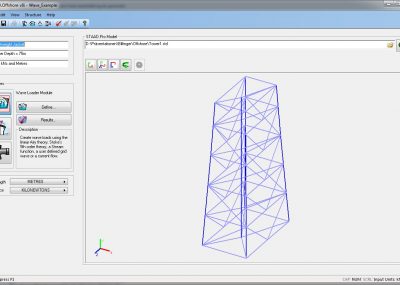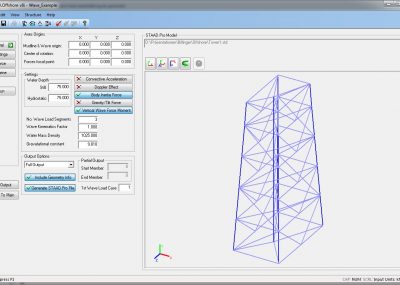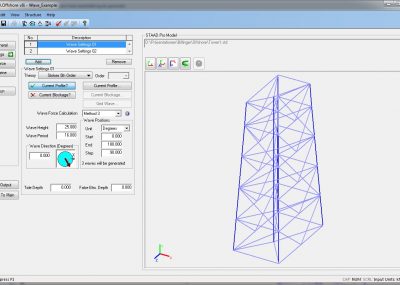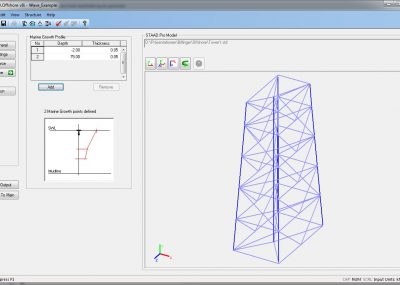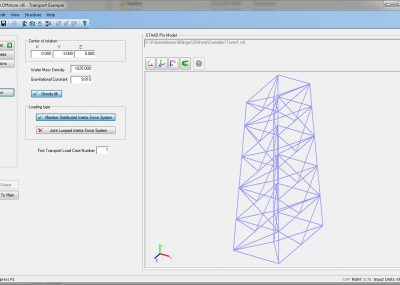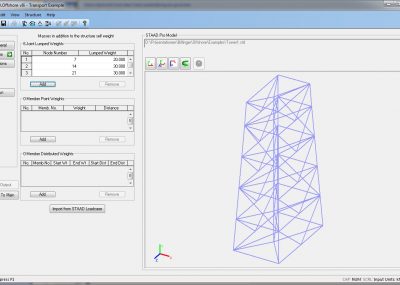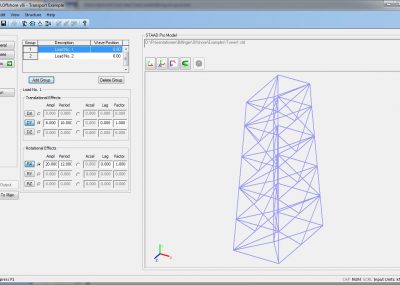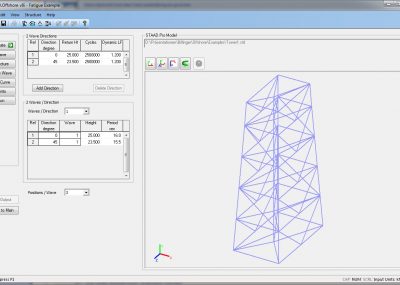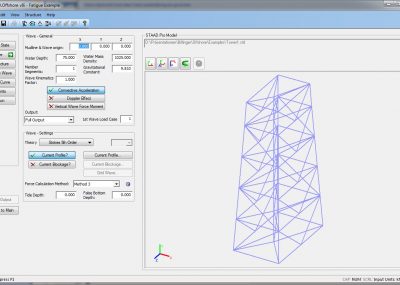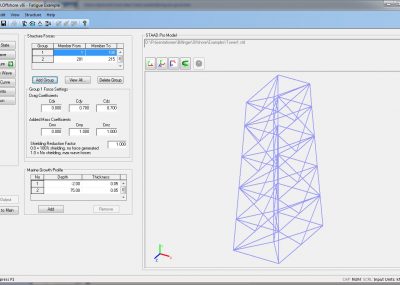
STAAD.Offshore - Deterministic Fatigue analysis of 3D Tubular Space frames (FATIGUE)
The FATIGUE module computes the fatigue lives of tubular joints at the chord-side and stub-side positions of the stub to chord weld connections, and at the stub-brace weld connection. The cyclic member end forces are generated by STAAD.Pro from the loading calculated by the WAVE module.
The analysis is based on a log-linear wave exceedance curve, bi-linear S-N curve, and either a single reference wave height with an assumed stress function relationship through the wave height; for each wave approach direction to the structure.
The stress concentration factors can be generated by the program using either the Wordsworth Smedley Equations or the Lloyds Equations as presented in a paper by P. Fisher and P. Smedley, 1991, or input manually.
The analysis can consider up to 16 wave approach directions to the structure. In each wave direction the reference wave height is stepped through the structure in equal increments using the program WAVE to generate the member loadings, which are input to the structural analysis program STAAD.Pro to generate the member end forces.
The maximum number of wave positions within the wave length is ten. The cyclic stress range is determined from quadratic curve fitting through the 2 maxima and the 3 minima points. Alternatively, three wave positions at phase 0, 90 & 180 degrees apart may be used to generate the member end force data. For this condition the fatigue program will fit a sinusoidal function through the data to determine the cyclic stress range for the wave height. This method is not so accurate as the curve fitting approach, especially for those members in the wave zone, and members that cut the wave surface profile.
A number of waves can be passed through the structure to obtain the stress range versus wave height relationship for each wave direction, or the cyclic stress range versus wave height relationship can be obtained from a single reference wave height in each wave direction. For the single reference wave height method it is assumed to be that the stress range, S, is equal to the constant, a, times the wave height, H, raised to the power constant, b. From the stress range, Sr, associated with the reference wave height, Hr, the constant, a, is computed by assuming a value for the power constant, b, is of the order of 1.4 for jacket structures. This operation uniquely defines the cyclic stress range relationship to be used for the fatigue damage calculation. The program will evaluate the fatigue lives at up to 16 points around the tubular and output the minimum life of the chord, stub, and brace.
The wave exceedance curve data is log-linear based on a one-year return period, i.e. the wave height will only be exceeded once in one year.
The program includes the D. En S-N curves B, C, D, E, F, F2, G, W, and T curves and the facility to declare a user defined S-N curve. The S-N curve is log-bi-linear, and is defined by the S-N curve constant LOG10(A), the allowable cycles at the intersection of the first and second parts of the S-N curve at NO cycles, (normally 107 cycles), and slope of each part.
The fatigue damage calculation is based on Miners cumulative damage rule. Using Miners rule, and the above relationships for wave exceedance, S-N curve, and cyclic stress range versus wave height, a closed form solution is obtained for fatigue damage.
Screenshots of STAAD.Offshore in Action


